JBL was founded in Los Angeles, California, but nowadays, the audio juggernaut has departments all around the globe and is one of the most influential audio brands there is. Many people wonder where JBL products are currently being made. In the rest of this article, we’ll cover that and other important information you should know about the company.
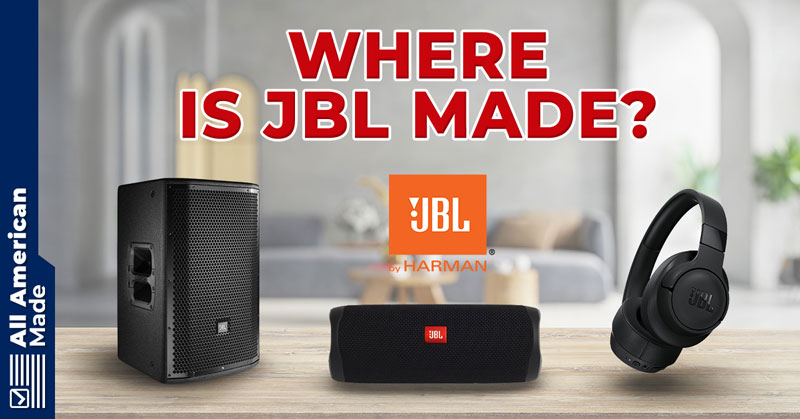
JBL products are made in several countries, including China, India, Mexico, Hungary, and Germany. The company still designs most of its products in the United States but has shifted manufacturing from the USA to other countries to cut costs.
With many products that fill all segments of audio use, JBL offers reliable options for headphones, speakers, accessories, earbuds, radios, amps, subwoofers, soundbars, and many more. Still, the company is at the top in terms of cost-effectiveness since its products display excellent engineering and standards at a very affordable price.
Moreover, JBL is highly popular and invested in the community, resulting in friendly customer service and constant product upgrades. The company’s social media presence is also pretty huge, and one can quickly contact them over e-mail, Instagram, Twitter, and more. Furthermore, one can expect to see constant sales on JBL’s website, which they always keep up to date.
So, we know they have high-quality management, products, and customer support. Still, we can also say positive things about their manufacturing quality, but, for many, there is more to it than simply the product’s sturdiness. For instance, it’s common to seek products made on familiar grounds, and since JBL is an American company, one might assume the company produces its audio stock in American facilities. However, this is not the case since JBL aims for globalization and has its production happening overseas, most precisely in China.
Furthermore, some customers value investing in the American market, which includes assisting facilities in the US and American workers. Unfortunately, seeking American-made products is becoming an arduous task since many companies avoid extra expenses by shifting production overseas. So, although JBL has headquarters in the US, they’re more globalized than America in terms of manufacturing.
Still, some consumers do not fully believe that overseas production follows the same standards as national craftsmanship. Consequentially, for them, overseas production that aims for cheaper expenses results in weaker materials and more lousy handcraft quality.
Yet, various background information about JBL explores the company’s trajectory, which includes manufacturing and management changes worth knowing.
If you’d like to check it out, the video below does a great job explaining JBL’s company story.
Where Are JBL Speakers Made?

Most JBL headphones and earbuds are designed in the USA and then wholly made in China, apart from some components inside speaker systems.
Until 2010, JBL had facilities in the United States responsible for manufacturing and assembling some of the company’s speakers. This includes cabinets, drivers, accessories, and replacement parts. However, in February of 2010, JBL took the management decision to close its most important US factory in Northridge, California.
Before this time, the production of some transducers, woofers, drivers, and cabinets took place in the USA, with some exceptions happening overseas and in Mexico. Still, during the company’s earlier years, its entire manufacturing process took place in Northridge a few decades ago.
In addition, concerning engineering and design, JBL researched the most acclaimed speakers in the United States with its team of American engineers, such as Greg Timbers and Jerry Moro. However, in 2015, one of JBL’s most knowledgeable engineers, Greg Timbers, responsible for various successful products of the company, was laid off.
Moreover, since Harman International Industries owned JBL, most management decisions were out of control for JBL employees. So, with Samsung buying Harman in 2016, another management impact occurred in JBL. As a result, three old-time JBL engineers were laid off in March of the same year, impacting the company’s speaker’s engineering hugely.
Still, although the engineering changes hugely impacted JBL’s speaker quality, most of the process of designing and researching a speaker model yet takes place in the company’s headquarters in LA.
So, nowadays, although engineering and design take place in the US, JBL speakers are manufactured mainly in China, including all their inner components and cabinets.
However, since Harman’s acquisition of JBL in 1969, they took control of its management, production, and distribution. So now, you may wonder, with Samsung’s acquisition of Harman in 2016, this means that Samsung produces JBL, right?
Not quite.
Where Are JBL Headphones Made?
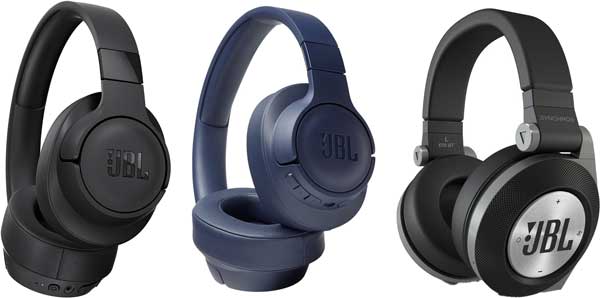
As with JBL’s speakers, their line of headphones is designed and engineered at the company’s headquarters in LA. So, you can expect their earbuds and over-ear headphones to share American-developed technologies, with any difference gap resting on updates and releases of newer models. In this sense, the sound quality and frequency response from models such as the JBL displays work made by the company’s team of engineers located in Northridge and Stamford.
However, most JBL Headphone models will contain “Made In …” information on their chassis concerning the manufacturing place. Yet, chances are incredibly high that the figure will read “Made In China” since most of the company’s production happens over there. For instance, models such as the JBL Tune 750 BTNC Over-Ear will undoubtedly have their manufacturing information leading to China.
Still, there is a high chance of the headphone containing a driver or an accessory made in Mexico, Hungary, Germany, or India. But, since most material and work happens in China during production, the headphone is required by law to feature the country where most manufacturing occurred.
Did Samsung Take Over JBL’s Production?
Although Samsung bought Harman, which had control over JBL, it did not dictate any considerable impacts in terms of production. In this sense, what Samsung did was only purchase the trademark and profit from obtaining its ownership.
Moreover, Harman International is primarily responsible for JBL’s production, design, and assembly, as it has been for decades.
JBL Suppliers
To understand JBL’s high presence in China, one might find that looking at the company’s supplier list is a bit explanative. So, since the Chinese network of suppliers and distributors is optimized to make it incredibly cost-effective for companies, let’s discuss a bit about JBL’s suppliers, which are predominantly in China.
Among many components in JBL’s speakers and headphones, the battery comes from a Chinese manufacturer Shenzhen Sunwind Energy Tech Company. In addition, Galaxy Electronics, located in Shenzhen, also provides batteries for JBL speakers. More Chinese suppliers that assist in the making of JBL’s batteries are Shenzhen Kingsener Electronic, Shenzhen Mybestronic Industry, Guangzhou Fangan New Energy, Powercom Technology in Jiangxi, and more.
Moreover, a good chunk of the packaging is supplied by Dongguan Lintai Luggage, Dongguan Fulitta Bags & Cases, Dongguan EVA Case, and Dongguan Lianping Luggage.
Furthermore, most of the company’s products that feature metal casings have materials from Dongguan Xinma Metal.
So, these are probable suppliers of JBL products since they focus a good amount of their production on making components, batteries, and parts for JBL speakers and headphones.
Where Is JBL Headquartered?
JBL’s first private location was in Los Angeles, more specifically at Fletcher Drive. Yet, it never went too far away from there, only shifting to Northridge, where you can currently find the company’s headquarters.
However, they have distribution centers all over the world. Still, their presence in the online market is vast, which is something they keep investing.
Does JBL Make Any Products In The USA?
Before 2010, JBL had production facilities working at Northridge. In addition, even before that, every JBL model made from 1946 to 1969 had its manufacturing on American grounds. However, after Harman acquired the company in 1969, some manufacturing facilities shifted location. Still, even a few decades after that, US-made products were predominant.
Today, JBL doesn’t produce any speakers, headphones, soundbars, or radio systems in the United States since they do not have any manufacturing facility in the country.
American Audio Companies’ Focus on China and Mexico
One might wonder why so many audio companies that started in the United States shifted their production facilities to Mexico and China. So, the reasoning is almost always the same, and many companies like Klipsch, Bose, and JBL share similar motives for it.
After successfully emerging in the American market, most companies attempt to expand their profit margin by cutting expenses. In addition, to integrate the global market and reach customers outside of the United States, cutting expenses from manufacturing costs is a hand on the wheel.
Additionally, whenever a company is expanding and reaching a “golden age” status, it’s common for the owners to integrate it into the stock market, where shareholders will take part in decisions through voting. So, as stock owners, it’s only natural for them to try and amplify the company’s profit margin, which can signify controversial choices.
However, why Mexico though? Well, since Mexico’s labor is significantly less expensive than in the US, a good chunk of salary expenses for factory workers get cut. So, workers in Mexico usually get paid less than half of US workers. Now, since Mexico shares borders with the United States, the transportation fee is hugely low compared to overseas alternatives. In addition, the cost of maintaining a warehouse, including electricity bills, land taxes, and more in Mexico, is significantly reduced compared to in the USA. Currently, Mexico’s minimum wage is 7 United States Dollars per day.
Now that we understand why companies shift production to Mexico, let’s briefly discuss the reason for manufacturing in China.
China has an immense number of available minimum-wage workers. In addition, the country’s minimum wage equals roughly 1.90 United States Dollars an hour. Moreover, China has a massive network of suppliers and distributors that hugely facilitates the cost-effectiveness of manufacturing operations.
Additionally, unlike the US, China has minimal regulations concerning safety, health, and the environment, with even fewer inspection activities. So, despite transportation expenses, China is usually a better economic choice for American companies, which explains JBL’s major shift to the country.
Finally, most audio companies that follow shareholder expectations shift their entire lineup production to China, including drivers and components. However, some companies still keep their production in countries such as Hungary, Dutchland, and Romania, where, although salary expenses aren’t as cost-effective, product quality still sits at a cost-effective status.
What Countries Does JBL Manufacture Products In?
As aforementioned, JBL is an American company seeking to peak its globalization presence, which means they constantly expand distribution and production. With this in mind, it’s natural to understand that their focus is cost-effectiveness and stock quantity. So, like many companies that chase the same market results JBL aims for, the company has a large chunk of its production happening in China.
However, JBL’s production and manufacturing expands a bit more from China. Since Harman International has facilities in India, Germany, Hungary, and Mexico, many of JBL’s components come from these countries, making the company highly competitive in globalization.
Moreover, to correctly understand JBL’s progress through history and all its shifts in management and manufacturing location and partnerships and influential people, we can begin by learning a bit about the company’s American founder, James Bullough Lansing.
James Bullough Lansing
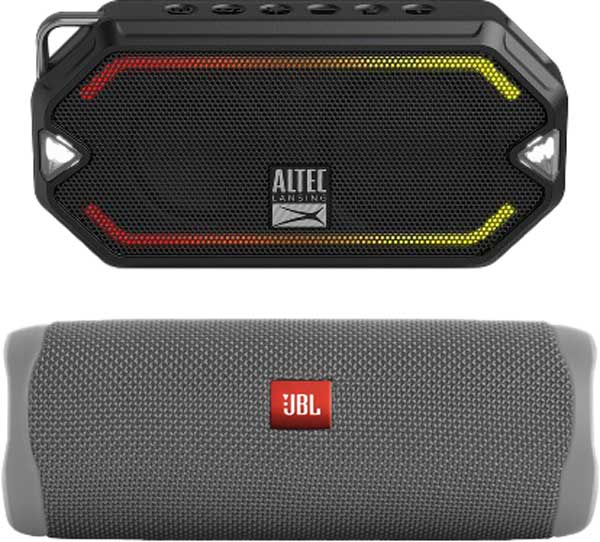
James was an American audio engineer who made various contributions to loudspeaker designs in America during the early days of audio development. In addition, he is well-known by the audio community for being the founder of Altec Lansing and JBL, two massive audio businesses.
He was born in 1902 in Macoupin County, Illinois. In addition, his legal name at birth was James Martini, which later he changed to James Bullough Lansing after living with the Bullough family for a while.
An engineer at heart, James was pretty skillful even at a young age, where he was quick and effective at building curious devices. For instance, one of his early inventions was a crystal radio receiver and a radio transmitter, which could surprisingly reach the Great Lakes Naval Station. Moreover, the device was so powerful that the Navy had to track it down and dismantle it as a safety measure.
After graduating high school in Springfield, James worked as an automotive mechanic and radio station engineer. During this time, James met Ken Decker, who would later be his business partner.
After teaming up with Ken Decker, James made its loudspeaker manufacturing business in Los Angeles and named it the Lansing Manufacturing Company in 1927. However, in 1939, Ken Decker, unfortunately, passed on a plane crash, leaving James Lansing struggling with the company’s business decisions, resulting in financial problems. At this time, the company was sold to Altec Service Corporation, resulting in James’ loss of ownership. Still, the founder remained a VP of the company.
In 1946, James left Altec and created the original JBL as we know it today. So, JBL stands for James B. Lansing Sound Incorporated, shortened to JBL. However, only three years after JBL’s foundation, James struggled financially and personally, leading to his suicide in 1949.
James’s brilliant engineering skills were essential to JBL’s first creations, the D101 and D175 speaker systems. But, of course, both were American-made products. Moreover, the D130 is considered JBL’s first impactful original system, which the company kept in the production line for 55 years on American grounds.
In addition, after his death, JBL’s VP, Bill Thomas, took control of the company’s operation. Until then, the company wasn’t at a peak and was modestly producing speaker systems primarily for cinemas.
However, by exploring the company’s path further, one might understand how impactful JBL was in the American audio presence worldwide.
Popular Related Article: Where Are Klipsch Speakers Currently Made?
The History Of JBL

JBL has gone through ownership changes, recessions, manufacturing shifts, and engineering rearrangements for roughly seven decades. Furthermore, the company is globally acclaimed and has amassed awards such as an Oscar, Grammy, and technological achievements.
JBL’s first decades of existence were all about high-quality speakers such as the Hartsfield and the Paragon models, which collectors still crave in today’s age. Moreover, in the late 50s, JBL began with its studio monitors, such as the JBL4320 series, which debuted in Hollywood and became world-famous, assigning JBL a pretty massive reputation. In addition, after gathering some fame, the rock n’ roll community adopted JBL through the D130 loudspeakers, which Fender guitars hugely supported and assigned with their image.
In the late 60s, JBL, now a million-dollar company achieving considerable profits in the American market, got bought by Harman International. As a result of the ownership change, the company began developing sound systems for consumer use to gather a household clientele. Consequentially, JBL hit a huge home run and expanded even further. For instance, their first household model, the L-100, became the best-selling loudspeaker of any company in the early 70s.
So, around the mid-70s, JBL fame rose even further, with most recording studios in America using their professional monitors. In fact, a survey by Billboard indicated that recording studios at the time were using JBL’s monitors more than all other brands combined. The company’s golden age lasted for some good years, with the high success of the L-series taking over the entire United States.
Still, in the 80s, JBL began investing in the high-end extreme of the audio market with the introduction of models such as the Everest and K2 lines, which were well-received project speakers. Additionally, many festivals, touring bands, conventions, cinemas, and industries, in general, gave preference to JBL loudspeakers, partaking in the company’s apex position in the American market during the 80s. Still, their first introduction to the festival world began in 1969, with their deliverance of audio systems at the Woodstock festival. Moreover, the Woodstock festival of 1999 also featured JBL’s audio systems.
Furthermore, taking its first jab into the automobile market, JBL began partnering with Ford, implementing high-end vehicle audio systems in many popular cars. At this time, JBL’s popularity in association with Ford was reaching better results than competitors like Nissan, who featured Bose audio system.
After a long list of achievements, including Woodstock, Grammy, FIFA World Cup, Super Bowl, and more meaningful appearances, JBL continuously took part in important events worldwide and expanded its presence outside the US. So, reaching a good globalization point, JBL began taking production elsewhere, focusing on improving distribution and profit margin.
One of the consequences was Harman shifting JBL’s production to the parent company’s various factories across the globe, such as Mexico, China, Hungary, and Germany, focusing on Mexico in the 2000s and late 90s and China in the following decade.
The Future Of JBL’s Products
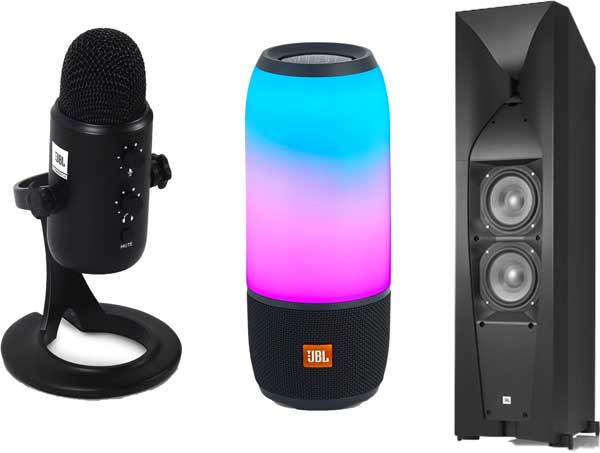
JBL is an intelligent company; they constantly release updates on their products, and invest in PR work, marketing, and customer satisfaction. So, just by checking the amount of new scheduled releases for upcoming speakers, headphones, and earbuds, one can see how JBL works ambitiously and successfully.
For instance, the new model from the acclaimed Flip series, the Flip 6, will come with various component upgrades, investing in acoustic work and sound quality. In addition, although pretty high-performant, the model will sit at an affordable price of $129.95, which is a treat. Unfortunately, however, it’s pretty unlikely that any of JBL’s upcoming releases, including the Flip 6, will have their manufacturing process happening in the US.
So, one can expect that all upcoming products, such as the JBL Reflect Flow Pro, Endurance Race, Quantum 350 Gaming Headphones, Partybox 110, and Partybox 710, will probably be manufactured in China.
To summarize, although JBL is a high investor and innovator in its own brand, it’s complicated to consider if it’ll get back at crafting US-made products. Nevertheless, for the company’s incredible attention to customer feedback, there is a high chance that JBL’s products will show significant changes in the build quality by the company’s investment in its manufacturing processes overseas. So, this means that JBL might take a hint in future upgrades and start improving the build process that happens in the company’s warehouses in countries with less quality control.
Besides, with constant warranty honors happening, they’re in for a big challenge if their products keep showing damages with less than a year of use. So, it can be a win-win scenario if they focus on the issue at hand.
Is JBL High Quality?
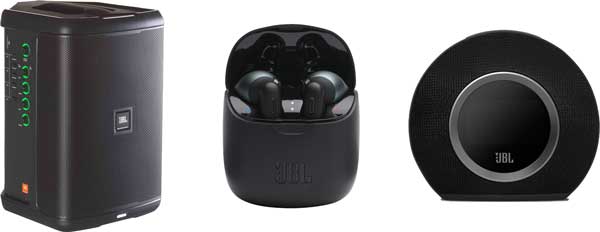
JBL wouldn’t be at the top level of globalization if it weren’t for their extremely smart-engineered speakers and headphones. So, yes, in terms of technology, sound quality, and versatility, JBL is one of the best audio businesses available. Not to mention the company’s affordable prices, which makes them highly cost-effective considering they make above-average stuff to their price range.
Moreover, although most of their headphone’s quality can seem relatively poor, the company has a helpful warranty and will cover unexpected damages such as broken hinges. Still, most JBL headphones don’t typically last for more than two years of constant use. In addition, the warranty friendliness can depend on where your customer service is.
For instance, there are cases of customers having great reception by JBL’s support team, and even a customer receiving four new JBL Everest 750 NCs in 4 years because those kept breaking. On the other hand, a customer from India had his JBL headphones crack unexpectedly in less than a year of use, and the Indian JBL’s support team wouldn’t cover physical damages to the product. Still, another customer reported that his JBL Netherlands experience was incredibly positive in a similar situation.
In a general way, JBL’s customer support is pretty compelling. Unfortunately, however, the company’s product quality isn’t pretty good, and there is a high chance of noticing cracks or damages in a headphone or speakers in less than a year of use. Still, JBL’s sound quality is unmatched for its price range, and you can fix most physical issues with the company’s friendly warranty and helpful replacement parts shop.
Should You Buy JBL?

Although JBL is an American company that made most of its history on American grounds and had a significant impact on audio globally while carrying USA-quality manufacturing, engineering, and design, the company has changed considerably. So, considering the company’s actual state and how its entire production happens outside of the US, we can’t recommend this company for people seeking to support American audio manufacturers.
By cutting labor, supply, transportation, and employment expenses, JBL has lost a bit of material and craftsmanship quality. Still, the company portrays excellent sound quality and performance levels, but with lousy chassis on their products. In addition, they do have helpful customer support, and most damages can go through a pretty quick solution by the company’s support team.
But, for people seeking to support American companies that produce their stock on US grounds, JBL must not be on the list.
American Made Alternatives to JBL
Various American companies are playing the same global supply chain game that JBL is, which means that it is pretty rare to find US-born audio manufacturers still producing their stock on American grounds.
Still, some companies like Klipsch and Bose try to keep at least a small portion of their stock manufacturing in the US. For instance, Klipsch cinema speakers, and some reference speakers, are entirely American-made in Hope, Arkansas, unlike most of their products.
And yet, Bose, a highly globalized company, makes most of its stuff overseas, but its aviation headsets are produced in the US, with the highest standards.
However, although some companies remain partially producing on American grounds, some alternatives make 100% of their stock in the US. So, some exclusively American made options are, but not solely:
- Westone
- Grado
- Audeze
- Dan Clark Audio
- Tekton
- Zu Audio
- Salk Sound
- Ascend Acoustics
Wrap Up
That does it for this article, if you have any further questions about where JBL is made let us know in the comments below. Also, let us know if there is any information about the company that we should add to this article.
Hi, my name is Kevin and I’m from Pittsburgh, Pennsylvania. Choosing products made in America is important to me because it supports local economies, creates jobs, helps the environment, and ensures ethical labor practices. I also find that American made products are usually of higher quality so although they’re a little more expensive, you save money in the long run. Before starting this website I was in the USMC infantry and nowadays I work on this website as a hobby.

As much as companies like JBL make you would think they could keep making their stuff in America after the American market literally makes them a billion dollar company or more.
Hey Gavin, I totally agree that it would be good to see more companies give back to the communities and countries that helped them succeed. JBL is a good pretty solid brand though so many in the future they will offer more American made speakers and audio gear.